11 Heavenly Flowers That Start with H + Growing Guide Charts

This post follows our research editorial guidelines.

Here’s a hotline on a host of heavenly flowers for your home. From humble heather to the heartbreaking half-flower, hothouse herbs inspire hope and happiness by the handful. They give hearty meals to hungry hummingbirds and helpful honeybees, hold humus in heaps, and humor our desire for heavenly hills and heartlands.

I’m hiking along a heaping hoard of my most heartening flowers, in alphabetical order. We’ve heaved up to the letter ‘h’. Hooray!
Quickly Find Flowers That Start With H
1. Heather (Calluna vulgaris)
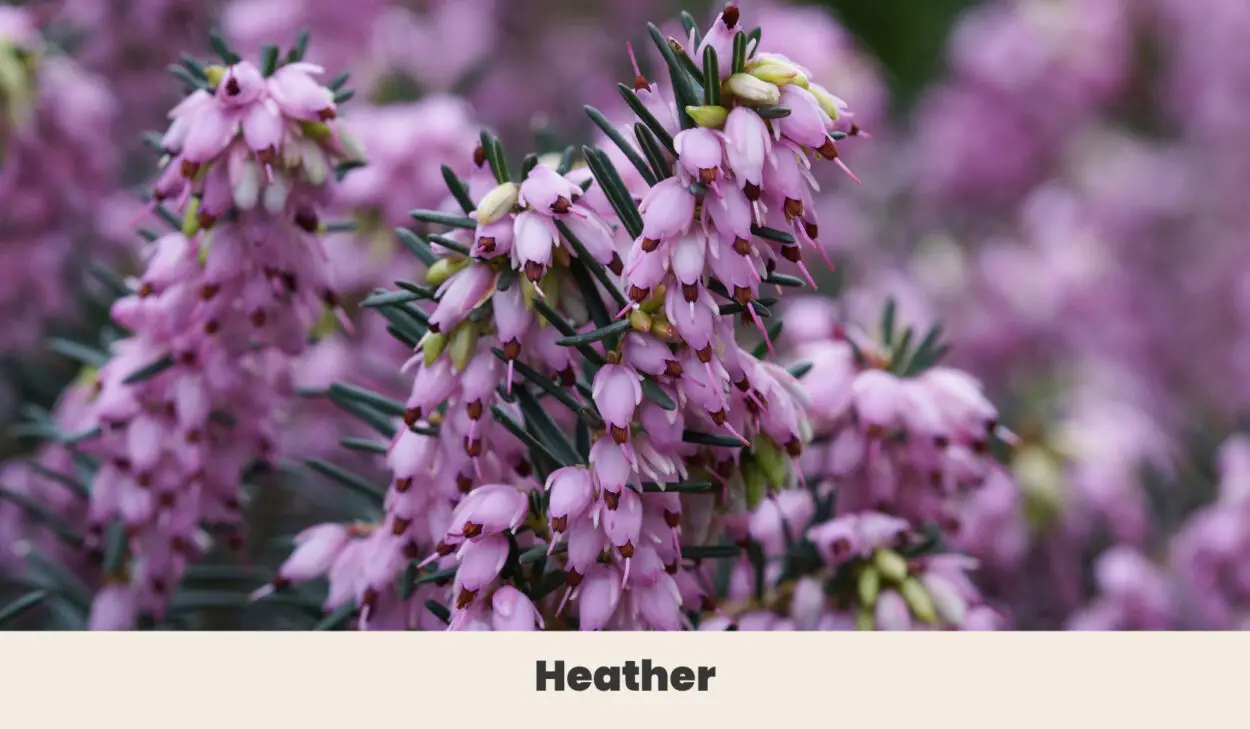
Heather is a classic symbol of Scotland, a glorious mauve haze that settles on the heat each summer. The foliage is just as gorgeous, changing from silvery gray to dark velvety chocolates and rich bronze, depending on the variety. With bell-shaped blooms in white or purple, this hardy variety is not one you will want to skip.
Heather is a tough-as-nails alpine plant, capable of surviving freezing conditions as low as −20 °C (−4 °F) and brutal exposure to harsh winter winds.
| Botanical Name: | Calluna vulgaris |
| Growth Rate: | Slow |
| Native Range: | Prune to shape and limit the spread |
| Hardiness Zones: | 4a to 6b |
| Soil Needs: | Thrives in all soil types |
| Exposure: | Full sun to partial shade |
| Blooming Period: | Summer to late fall |
| Water needs: | Low |
2. Hardy Hibiscus (Hibiscus moscheutos “Luna Red”)

If you want flashy flowers with some height, the hardy hibiscus is an excellent choice. It’s a sturdy shrub that produces deep crimson flowers almost as large as a dinner plate, dripping with nectar.
Butterflies can’t get enough, and the big blooms attract bees and other vital insects too. Its best use is in wet parts of the garden, as it will tolerate sodden soils that would set other flowering shrubs to rot.
| Botanical Name: | Hibiscus moscheutos |
| Growth Rate: | Fast |
| Native Range: | Eastern United States |
| Hardiness Zones: | 5 to 9 |
| Soil Needs: | Most, organically rich soil, will tolerate most types |
| Exposure: | Full sun |
| Blooming Period: | Summer to early fall |
| Water needs: | High |
3. Heavenly Bamboo (Nandina domestica)

Despite what the name would suggest, heavenly bamboo is not a form of bamboo but rather a compact evergreen shrub. It produces loose clusters of dainty flowers in the fall that develop into plump red berries and is known for the bright rosy color of its new leaves.
Be very careful where you plant this celestial specimen – it’s not only invasive in much of the United States and Australia but is also highly poisonous.
| Botanical Name: | Nandina domestica |
| Growth Rate: | Fast |
| Native Range: | China and Japan |
| Hardiness Zones: | 6a to 9b |
| Soil Needs: | Tolerates most soil types when draining needs are met |
| Exposure: | Full sun to full shade |
| Blooming Period: | Spring |
| Water needs: | Moderate |
4. Hellebore (Helleborus orientalis)
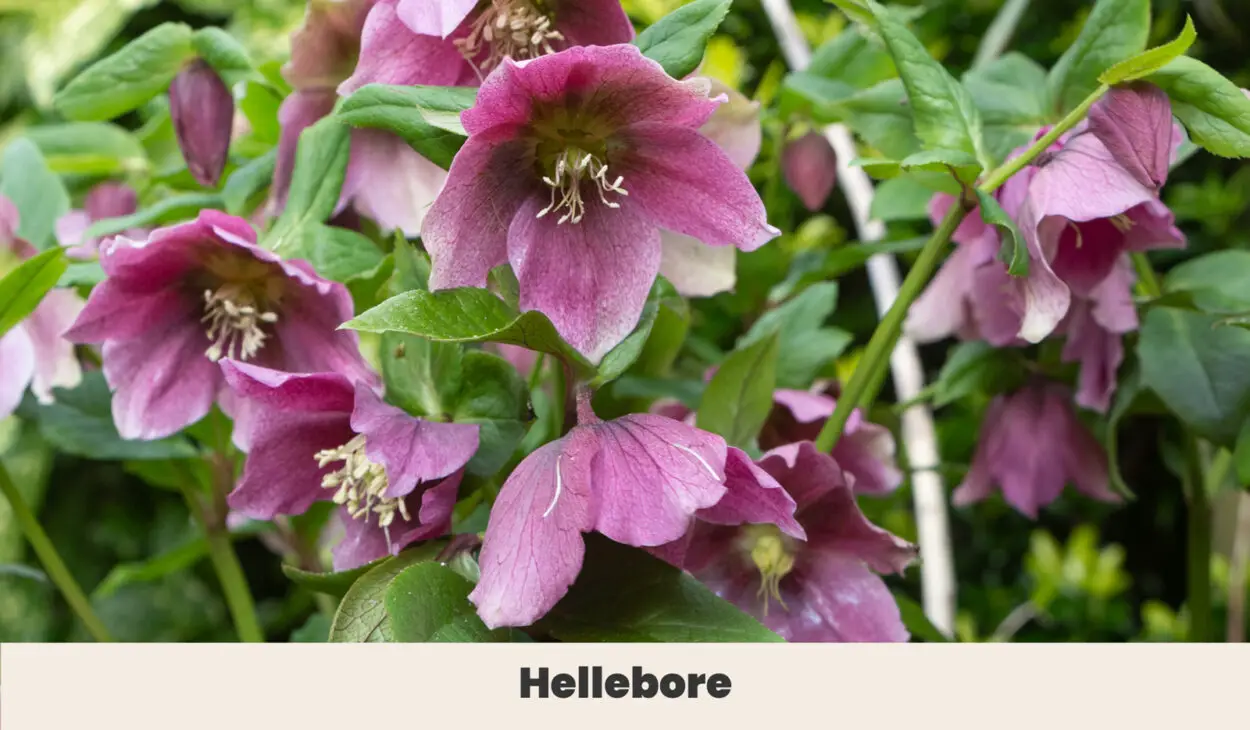
The winter-blooming Hellebore brings rare beauty into the dark heart of the year. Its blowsy blooms rise above rich glossy leaves, and long stems tipped with large, nodding pale flowers in pink, white, or cream.
It’s a harbinger of spring, as its ghostly blooms arrive as the seasons start to change. These early-growing flowers are vital to garden life, especially bees.
| Botanical Name: | Helleborus orientalis |
| Growth Rate: | Fast |
| Native Range: | Asia Minor and the Caucasus |
| Hardiness Zones: | 4a to 9b |
| Soil Needs: | Well-drained, moist soils of most types |
| Exposure: | Partial to full shade |
| Blooming Period: | Late winter to early spring |
| Water needs: | Moderate |
5. Hollyhock (Alcea rosea)

Spires of plump hollyhock flowers soar in glistening towers up to eight feet in height. This plant has been long cultivated to the point where its original range is uncertain, though Turkey is most likely.
As a result, their open, cheerful blooms come often in a broad range of colors, from white and pink to lavender and yellow. They’re also edible and make a fantastic garnish for summer salads and breezy cocktails.
| Botanical Name: | Alcea rosea |
| Growth Rate: | Fast |
| Native Range: | Turkey |
| Hardiness Zones: | 2a to 10b |
| Soil Needs: | Organically rich, loamy soils of most types |
| Exposure: | Full sun to partial shade |
| Blooming Period: | Summer |
| Water needs: | Moderate |
6. Honeysuckle (Lonicera spp.)
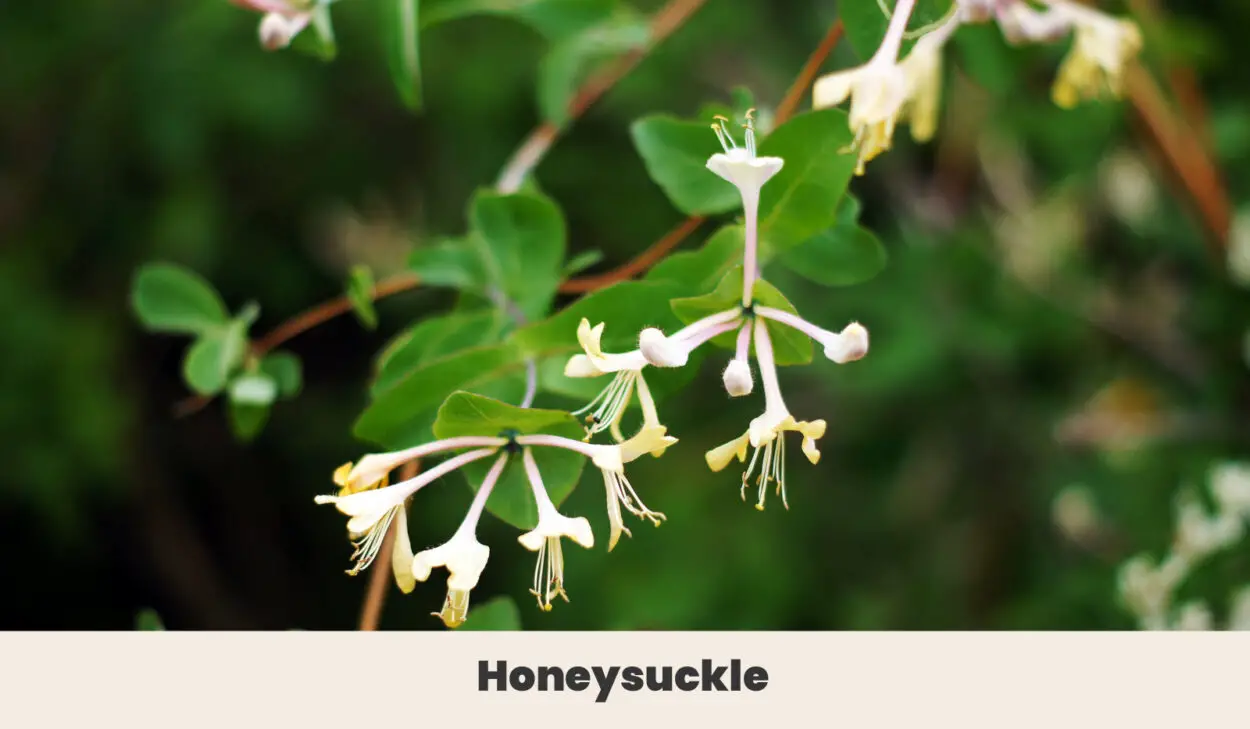
Honeysuckle is a much-loved flowering vine, sweetly fragrant with flowers full of delicious nectar. There are around 180 different varieties in the genus, ranging from the edible Fly Honeysuckle (L. caerulea) to the formidable Japanese Honeysuckle (L. japonica), so it pays to pick your variety with care.
Some will peaceably twine through their trellis, and others will smother buildings and make a break from the yard, becoming invasive.
| Botanical Name: | Lonicera spp. |
| Growth Rate: | Fast |
| Native Range: | North America and Eurasia |
| Hardiness Zones: | 4 to 9 |
| Soil Needs: | Thrives in most soils |
| Exposure: | Full sun to partial shade |
| Blooming Period: | Spring to summer |
| Water needs: | Moderate |
7. Hydrangea (Hydrangea spp.)
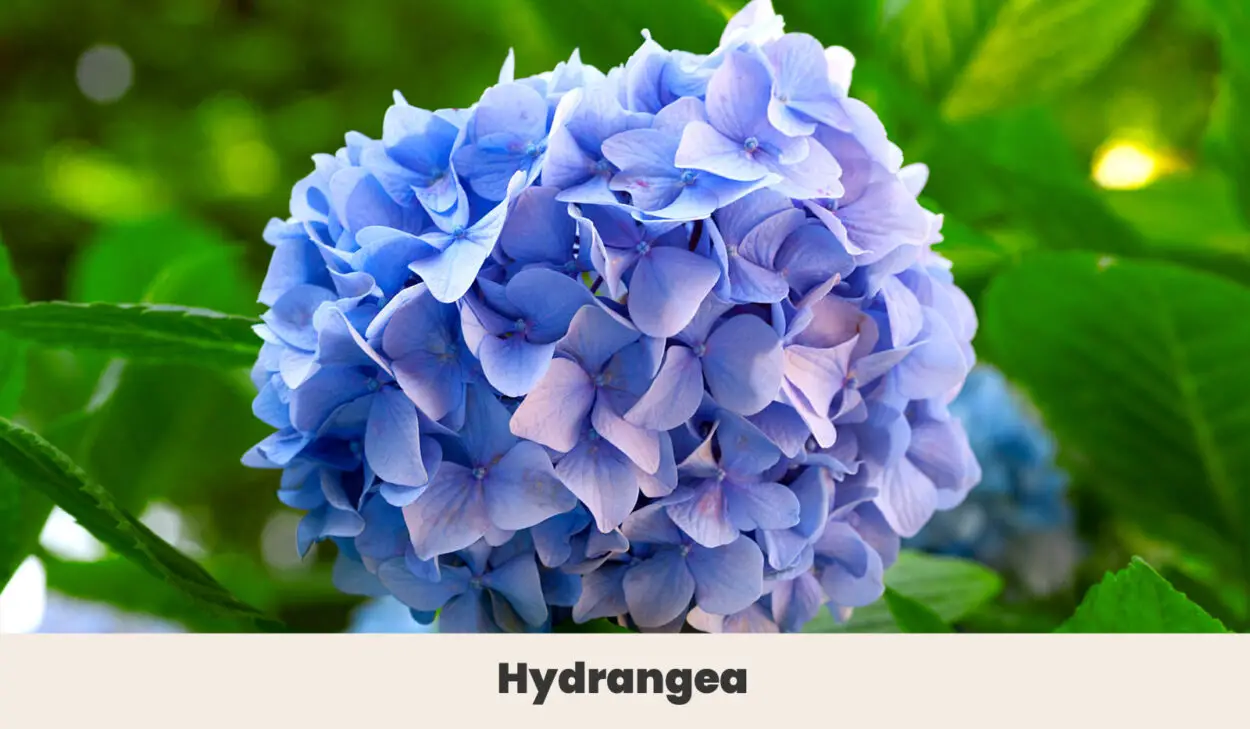
A big and blowsy bloom from a big and blowsy family, the hydrangeas are known for a special magic trick that occurs to their flowers. In acidic conditions, many hydrangea varieties will produce blue blossoms.
Acidic conditions allow the plant to produce pink flowers. In neutral conditions, the color will sit somewhere in the middle, a mauve purple. Cultivars that produce white flowers couldn’t care less, however, and just pop out their creamy blooms regardless. Hydrangeas are a great option for shaded areas in your garden that get less than 6 hours of sun per day.
| Botanical Name: | Hydrangea spp. |
| Growth Rate: | Fast |
| Native Range: | Asia and North America |
| Hardiness Zones: | 3 to 9 |
| Soil Needs: | Moist, organically rich soils |
| Exposure: | Full sun to full shade |
| Blooming Period: | Summer to Fall |
| Water needs: | Moderate to high |
8. Hyacinth (Hyacinthus orientalis)
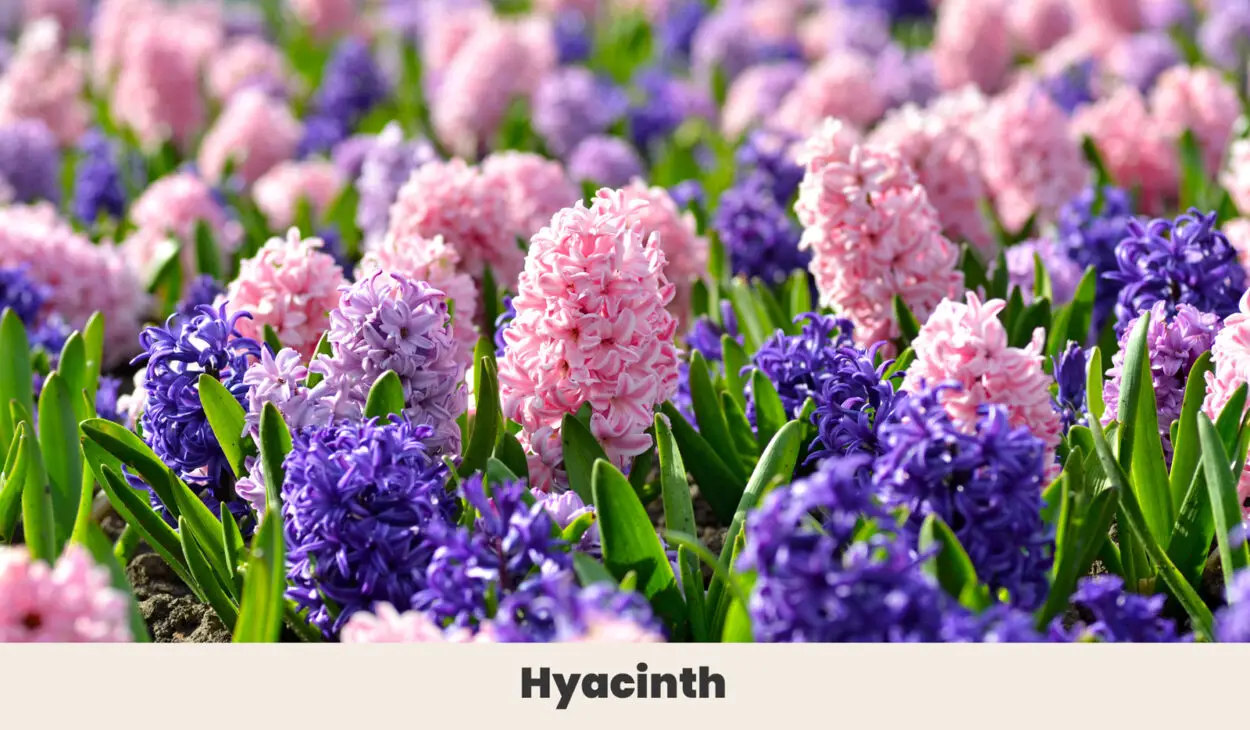
Hyacinths are an easy to grow bulb with show-stopping spires of tightly packed, radiant bell-shaped flowers. They come in flashy shades of blue, purple and pink, and modern cultivars have extended that into golds, oranges, reds and burgundies.
They make for striking mass plantings, with each subsequent generation increasing the richness of the bed.
| Botanical Name: | Hyacinthus orientalis |
| Growth Rate: | Moderate |
| Native Range: | Eurasia, the Mediterranean, and Turkey |
| Hardiness Zones: | 4a to 8b |
| Soil Needs: | Fertilize annually with balanced slow-release granules; mulch for winter |
| Exposure: | Full sun to partial shade |
| Blooming Period: | Spring |
| Water needs: | Moderate |
9. Hebe (Hebe speciosa)
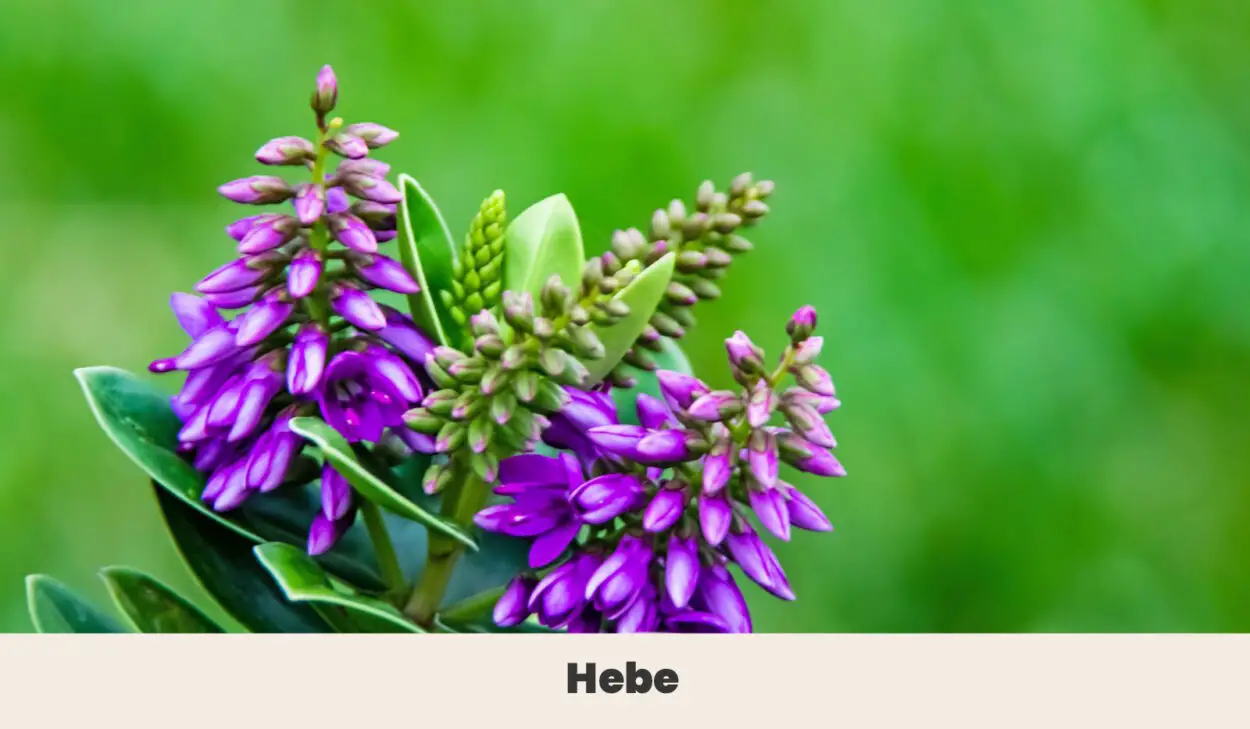
Native to New Zealand’s North Island, this antipodean delight is known to the local Maori people as napuka or titirangi . It’s a fleshy leafed shrub with thick, brush-like blossoms in vivid shades of bright purple, mauve and white.
While hebe largely blooms from summer through to late fall, when grown in conditions close to their native range these tough plants will often flower year-round.
| Botanical Name: | Hebe speciosa |
| Growth Rate: | Fast |
| Native Range: | North Island of New Zealand |
| Hardiness Zones: | 9 to 10 |
| Soil Needs: | Tolerates most soil types |
| Exposure: | Full sun to partial shade |
| Blooming Period: | Summer to fall |
| Water needs: | High |
10. Hawaiian Half-Flower (Scaevola taccada)
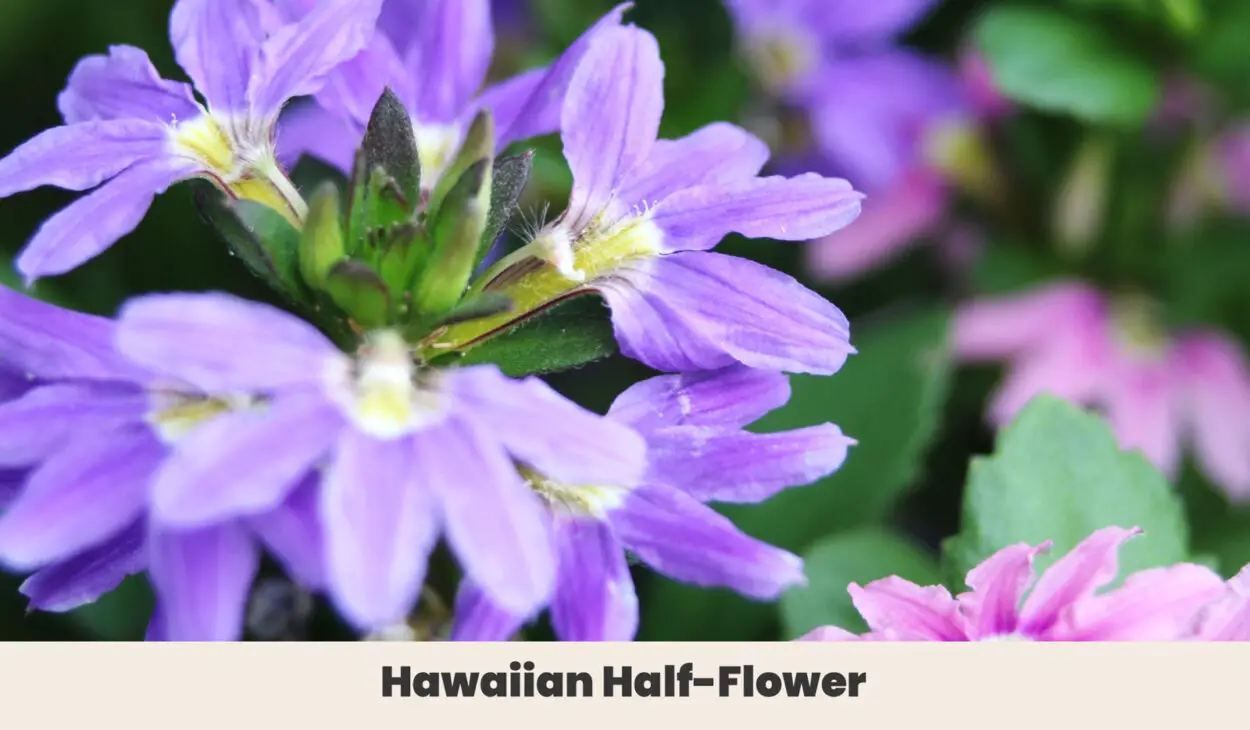
More commonly known as beach naupaka, the half-flower is a delicate white bloom that resembles a star clipped cruelly in half. The people of Hawaii tell the tale of a forbidden love between the beautiful Princess Naupaka and a kind fisherman named Kau’i.
Theirs was a forbidden love, and after many tribulations, they were forced to part, but not before the princess took a flower from her hair and tore it in half. She went into the mountains, becoming the mountain half-flower (S. gaudichaudiana), and her beloved returned to the beach as the beach half-flower.
| Botanical Name: | Scaevola taccada |
| Growth Rate: | Moderate |
| Native Range: | Coastal regions of the Pacific and Indian Ocean |
| Hardiness Zones: | 10 to 12 |
| Soil Needs: | Sandy soils |
| Exposure: | Full sun |
| Blooming Period: | Year-round |
| Water needs: | High |
11. Hummingbird’s Mint (Agastache spp.)

As the name suggests, hummingbird mint is a real draw-card for any nectar garden. Their tall, airy blooms are fine dining for just about any pollinating insect as well as migrating nectar-loving birds like the aforementioned hummingbirds. They’re deeply fragrant, tall swaying displays in radiant shades of red, gold, blue, purple and orange.
| Botanical Name: | Agastache spp. |
| Growth Rate: | Moderate |
| Native Range: | North America |
| Hardiness Zones: | 5a to 10b |
| Soil Needs: | Well draining soils of most types |
| Exposure: | Full sun |
| Blooming Period: | Summer to Fall |
| Water needs: | Moderate; drought tolerant once established |
Final Thoughts
Here’s hoping you have a hand-picked host of heavenly herbs to heave into hearty heaps. Helping host honeybees and hummingbirds is heartening and hopeful, good humor for hearth and home.

